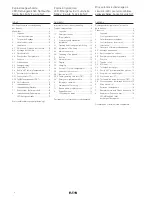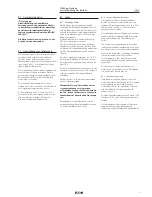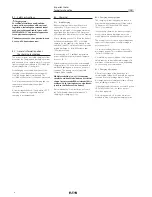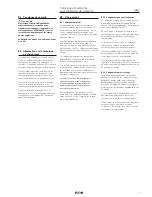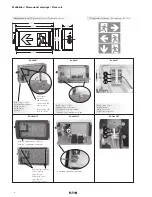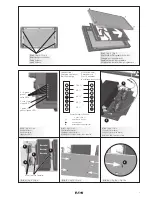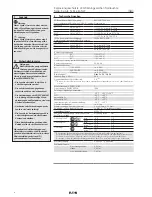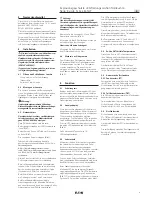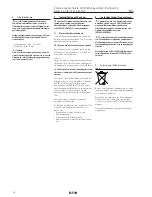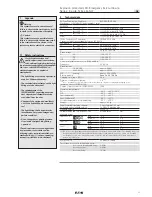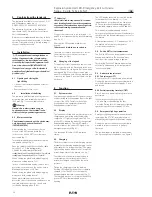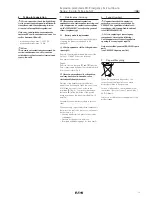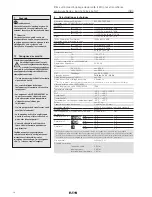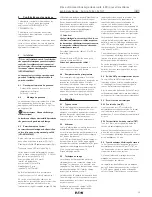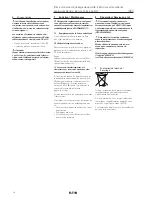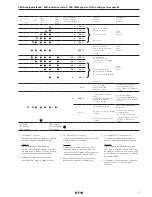
4
Important notes
for battery handling
GB
B3.2 Charging during operation
The charging current is engineered in such a
way that a discharged battery will have within
14 h approx. 90% and within 20 h approx.
100% of its capacity.
In emergency operation the battery voltage is
monitored via a deep discharge protection
which prevents a deep discharge of the cells.
The microprocessor controls and recharges any
reduction of capacity due to self-discharge in
normal operation.
It is recommended to have one or two fully
discharges per year. This increases the usable
life time of the battery.
Should this not be possible due to logistic and
safety reasons at least a partial discharge of a
minimum of 40 minutes or 2 hours depending
on the setting, is recommended.
B3.3 Charging after storage
After a long storage of the batteries a full
uninterrupted charge for 20 h should be applied
followed by a full discharge down to deep
discharge protection (emergency lamp off) and
then reloading for at least 14 h.
If the capacity indication does not show 5 green
LEDs fully lit after 14 h, the above process
should be repeated.
For a storage period > 6 months it is recom-
mended to have 3 charging/discharging cycles.
B3. Charging
B3.1 Initial Charging
Battery charging starts when the power is
switched on. On the connection of a new
battery the indication of the charge state may
be delayed by a few minutes. The first green
LED might take a few minutes to start flashing.
After a charging period of 14 hours the battery
will have reached approx. 90% of its rated
capacity. As the capacity of the battery is over
specified, this 90% will be sufficient to provide
a rated discharge for both a 90 minute and
180 minute setting.
Initial charging at 0 °C ambient temperature
might take double the time than at tempera-
tures of >10 °C.
After first mains connection an uninterrupted
charging time of 20 hours is recommended to
avoid early ageing due to power-on power-off
situations. The battery set is only partially
charged when supplied.
Multiple switching (on - off) of the mains
circuit should be avoided before a first initial
charge (recommended 20h, minimum 14h) is
achieved. Such interruptions can significant-
ly reduce the lifetime of the battery.
Recommendation: New batteries will reach
the full utilisable capacity after approx. 3
charging / discharging cycles.
B1. Safety instructions
Target group:
For skilled electricians and qualified
personnel in accordance with national
legislation, including the relevant stand-
ards and, where applicable, in acc. with
IEC/EN 60079-17 on electrical apparatus
for explosive atmospheres.
The battery must not be operated in zone
0 or zone 20 hazardous areas!
B2. General information about
the charging technology
The microcomputer controlled charging system
measures the charging and discharging current
and transmits it to a capacity meter. Five green
light emitting diodes indicate in 20%-steps the
actual charge state of the battery.
Overcharging is prevented by means of this
charging control dependent on the capacity.
Only the energy drawn is recharged. The
so-called memory effect is thus also prevented.
For electrochemical reasons charging and the
capacity are influenced at the ambient
temperature.
At temperatures below -5 °C and above +35 °C
charging will take a longer time and full
charging is not guaranteed.
Содержание Ex-Lite N
Страница 18: ...18 Notizen Notes Remarques...
Страница 19: ...19 Notizen Notes Remarques...


